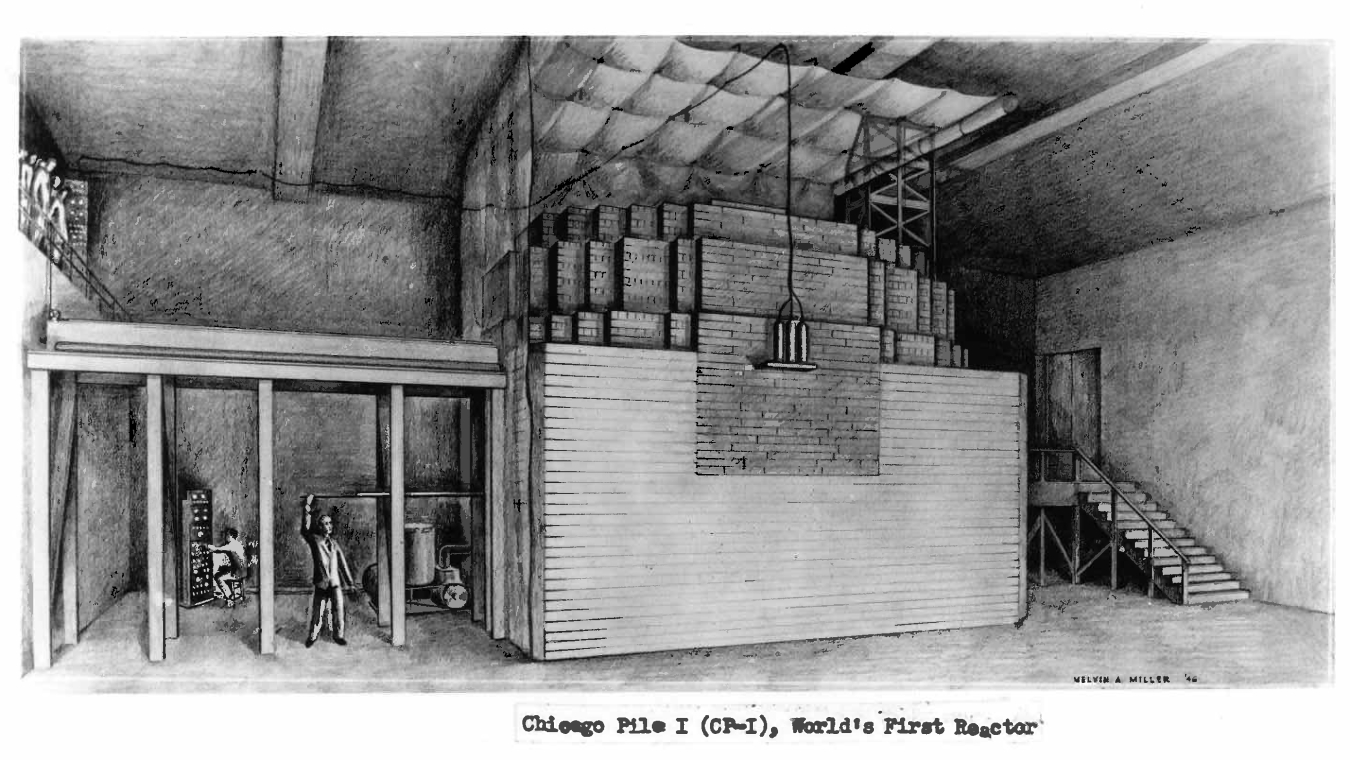Watch how the world's first controlled, self-sustaining nuclear chain reaction unfolded in this "brick" video by Argonne National Laboratory.
On December 2, 1942, the world’s first self-sustaining, controlled nuclear chain reaction took place paving the way for a variety of advancements in nuclear science.
The experiment took place at the University of Chicago’s football stadium under the direction of Enrico Fermi—a Nobel Prize-winning scientist.
Chicago Pile-1 was the world’s first nuclear reactor to go critical and fueled future research by the Energy Department’s national laboratories to help develop early naval and nuclear reactors.
Fifteen years to this historic day, America’s first full-scale atomic electric power plant went critical on December 2, 1957 as the nation began reaping the benefits of clean and reliable nuclear power.
Here are 10 intriguing facts you probably didn’t know about the world’s first controlled release of nuclear energy.
1. The experiment took place at 3:36 p.m. in a converted squash court at the University of Chicago’s abandoned Stagg Field in Chicago, Illinois.
2. Forty-nine scientists, led by Fermi, were present for the event. Leona Marshall was the lone female researcher.
3. The word “pile” was used in the first few years of the atomic age and gradually gave way to “reactor” to identify the key device that controls the nuclear fission reaction.

Drawing of CP-1, the world's first nuclear reactor.
4. The reactor was built with graphite blocks, some of which contained small disks of uranium.
5. Scientists monitored the reaction on instruments named after Winnie the Pooh characters—Piglet, Tigger and Pooh.
6. Scientist George Weil withdrew the cadmium-plated control rod unleashing the first controlled chain reaction.
7. The reactor had three sets of control rods. One was automatic and could be controlled from the balcony. Another was an emergency safety rod. The third rod (operated by Weil) actually held the reaction in check until it was withdrawn the proper distance.
8. The group celebrated with a bottle of Chianti that was poured into paper cups. Most of the participants signed the wine bottle’s label. This was the only written record of who had taken part in the experiment.
9. In the lead up to this experiment, a letter from Albert Einstein to President Franklin D. Roosevelt helped lead to the Manhattan Project—a government research project that produced the first atomic bombs. It was also the seed that grew into the modern U.S. Department of Energy national laboratory system.
10. The Energy Department’s Fermi National Accelerator Laboratory is named in honor of Enrico Fermi for his contributions to nuclear physics and scientific success at nearby University of Chicago.
Learn more about Argonne National Laboratory's legacy in nuclear science.
